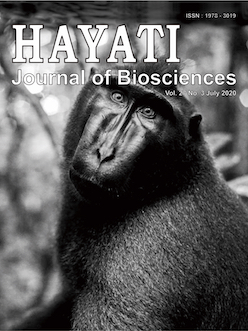Ecological Diversity of Microbial Consortium Feces of Beef Cattle and Lignite Coal
Abstract
Increasing energy demand is not alongside the availability of limited fossil fuels. Alternative and renewable energy sources are not only an option to overcome energy problems but also essential to minimize global warming. Another critical and promising renewable energy source is biomass-derived from livestock feces. Beef cattle feces contain a microorganism consortium that can be used as a starter with coal media to form biogas. Indonesia recently developed coal waste processing into renewable energy, such as biogas. This study aimed to overview the ecological diversity of microbial consortium of beef cattle feces, lignite coal waste, and a combination of livestock and lignite coal waste under mesophilic conditions. This research is an explorative method, the data obtained were analyzed descriptively. The process of formation was carried out anaerobically on a bottle containing the rumen fluid medium. The fermentation process lasted 42 days at 39℃ of temperature. After that, the sample was electrophoresis, followed by next-generation sequencing (NGS) method. NGS data is processed with the MG-Rast website. This study demonstrates the ecological diversity of microbial consortium of beef cattle, lignite coal waste, and a combined consortium. The results showed ecological diversity in the form of taxonomy dominated by bacteria, eukaryotes, and archaea.
Downloads
HAYATI J Biosci is an open access journal and the article's license is CC-BY-NC. This license lets others distribute, remix, tweak, and build upon author's work, as long as they credit the original creation. Authors retain copyright and grant the journal/publisher non exclusive publishing rights with the work simultaneously licensed under a https://creativecommons.org/

























.png) IPB University
IPB University Department of Biology
Department of Biology The Indonesian Biological Society
The Indonesian Biological Society 

